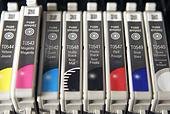Software publishers and hardware manufacturers are making significant efforts and progress on simplifying their offerings to the benefit of everyone. Simplicity is about “How do humans really work? What do they really need to do to accomplish a task?” These are very difficult questions to answer, but the answers are coming because a number of designers have been working on the question for some time.
Several technologies and products are examples of simplicity including SaaS and offerings like the Google search engine. What was the theme that came in second for this year. “You don’t know what you don’t know.” Clearly this is an issue as technology becomes more complex and good offerings become more plentiful.
So what are the current “hot” items from a short- and long-term perspective? The short-term technologies that business's should consider include:
Virtualization: All sizes of organizations should virtualize their servers and applications and that many publishers are responding by packaging their software in virtual appliances. Business's can adopt much of this technology now for servers, and over the next few years you will see your desktops, applications and storage all virtualized. VMWare is king of this space, but Microsoft, IBM, Oracle, Sun and Citrix all have reasonable options.
Software as a Service: Bill.Com, The Business Analyst, Capital Confirmation, GoFileRoom, MyPay, Run by ADP, PaySimple, SageWorks ProfitCents, SAP Business By Design, TimeBuilder and XCM all have offerings that can be installed quickly and run from a Web browser. In some cases, I do not know of a viable competitor with the same capabilities at any price. In other cases (unfortunately under nondisclosure) there are some superb offerings that you will see yet this year in addition to these new generation products.
Third-party products: These vendors expand and improve mainstream products by finding a need and filling it. For example, for QuickBooks alone there are: LeGrand CRM, MISys manufacturing, Fishbowl Inventory, BillQuick Time and Billing, Avalara AvaTax, SpeedTax, Softrak Adagio FX and Wasp Barcode just to name a few, plus thousands of others. Further, many of these products can work standalone or with other products as well.
Windows Server 2008: Windows Server has notable performance and reliability improvements including the supporting products of SQL 2008, Hyper V, ForeFront and improved Active Directory. SharePoint Services, PerformancePoint, Exchange 2007 and IIS are all becoming more widely deployed.
Windows Vista and Office 2007: The current technology is good, and ready to be deployed. I recommend using the 64-bit versions even though initial implementation may be a little more difficult. For most organizations using Open Licensing with Software Assurance is the best strategy, particularly after you have enrolled in MPAN. Remember that these technologies will be replaced by Windows 7 and Office 14 in 2009.
Improvements in scanners: Both Fujitsu and Canon have had notable and major improvements in their product lines this year. You should definitely take note and make your acquisitions from the new lines. The Fujitsu ScanSnap S300 and S510 are notable improvements as are the Fujitsu fi-6140 and fi-6240.
Reporting: There are significant shifts occurring in business reporting including Excel reporting tools like BizNet Software, Adagio FX, Crystal Xcelsius and the shift at Microsoft from FRx to PerformancePoint. Many of the business analytics companies and products have been purchased by larger companies, for example Business Objects being acquired by SAP, Cognos being acquired by IBM, and Hyperion being acquired by Oracle.
Voice over IP (VOIP): This technology has come of age. In doing the research for my own company this year, I was exceptionally pleased at how usable and affordable advanced features had become. I can see no condition under which a phone system should be replaced without at least some consideration for VOIP compared to traditional PBX or KSU systems. This applies to all sizes of companies.
Green: From the introduction of Intel’s Atom to the announcement by Dell about making their product line 50 percent more energy efficient over the next two years, being energy efficient is more than a fad. You can help your business save money by buying more energy-efficient products today, and by teaching your team about energy-saving steps to use with technology.
Security: Far from being solved, most organizations are just assessing their risks and choosing encryption software. We believe that encryption will be needed on all laptops, desktops, servers and backups by the year 2012, possibly sooner. Passwords still are sufficient today, but two- and three-tier authentication is also becoming more important.
Longer term technologies that will probably have merit include:
New generation communications: Including WiMax, 802.11n and soon-to-arrive on the desktop 10GB Ethernet.
Replacement cellular technology moving from 3G to 4G: Players will include Apple with the iPhone, RIM with new-generation BlackBerry products, Google Android and Samsung.
More SaaS and Utility computing: It should be possible to run an entire business with no servers in-house if you choose this strategy. Assume all current services can be hosted, virtualized or will be offered as SaaS.
Small portable devices replacing laptops: Prototypes have already been created using projection and other techniques eliminating laptop devices. Many of the new-generation cell phones are candidates to have enough computing power to serve as your access to information. Internet and cell phone convergence will lead to even bigger shifts in the way we use technology. Scorecard today: 3.3 billion cell phones, 1.2 billion laptops. I expect even more cell phones within three years and only moderate growth in laptops. I recommend the return to desktops at the office and home unless there is a need for portability. This strategy provides more speed and security at a lower cost.
Nanotechnology: I have long been a fan of this technology that crosses multiple industries. For computing, we expect smaller devices, security implemented via nanotechnology and flexible screen technology


 Printing colored pictures on a home computer consumes the maximum amount of ink.
Printing colored pictures on a home computer consumes the maximum amount of ink.